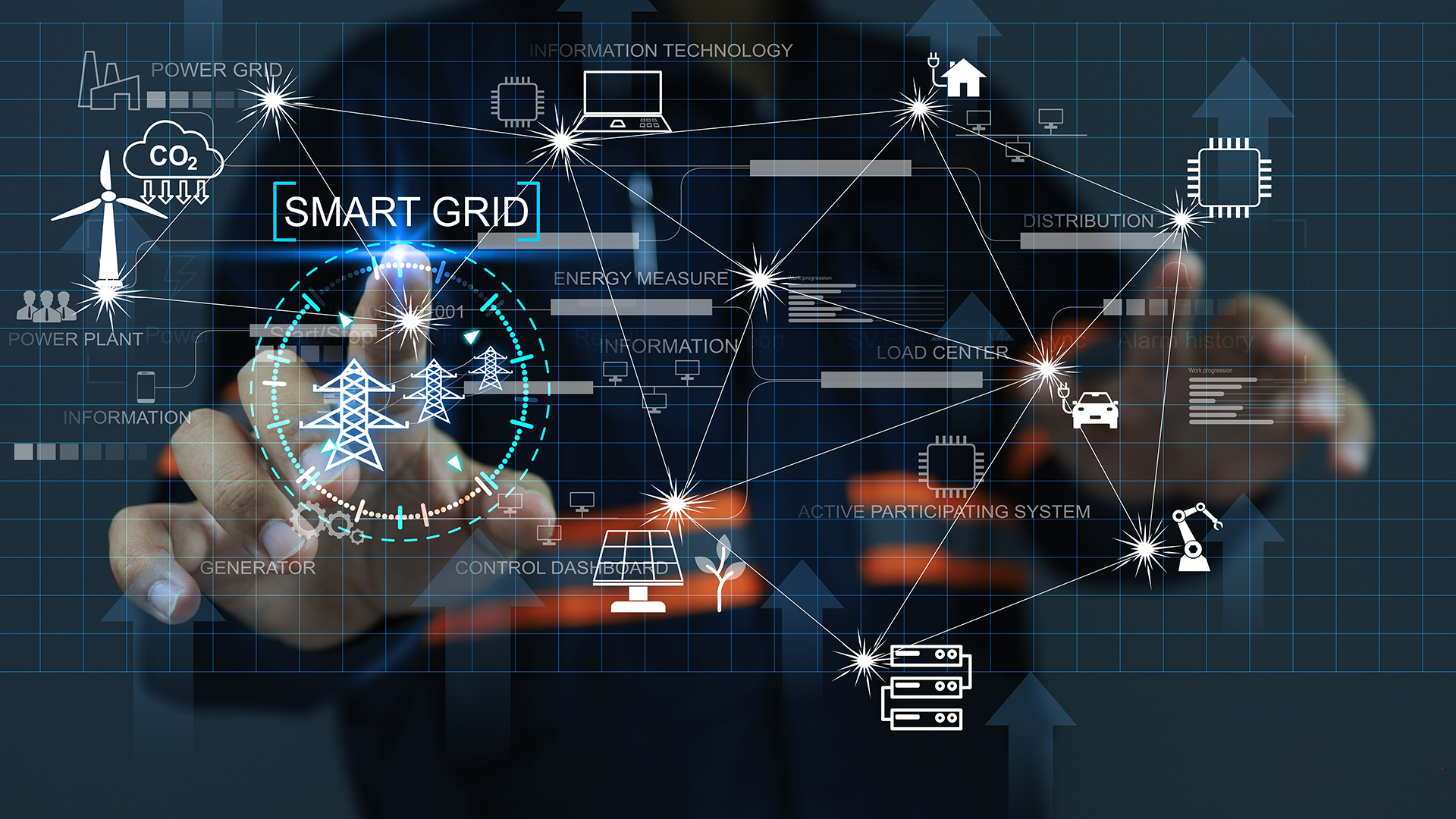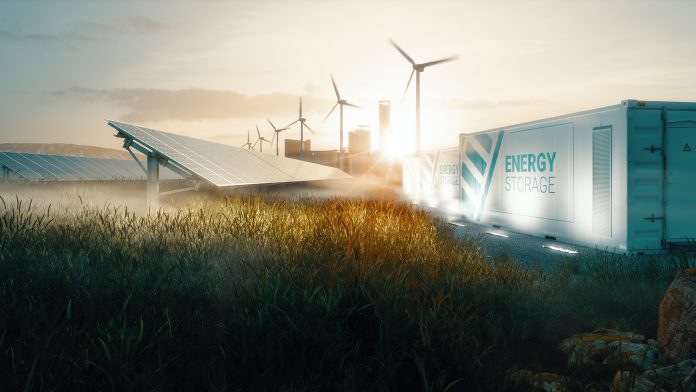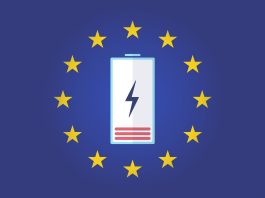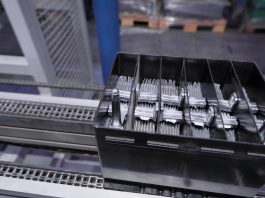To learn about Europe’s energy storage potential and exciting progress in the sector, The Innovation Platform Editor Maddie Hall spoke with EIT InnoEnergy’s Thematic Leader of Smartgrid and Storage, Johan Soderböm.
As the world navigates its transition to renewable energy, the importance of grid flexibility has become increasingly evident. With many renewable energy sources, such as wind and solar, providing an intermittent electricity supply, it is challenging to rely heavily on these technologies to meet supply and demand on a large scale without the capacity to store excess energy for use during peak times.
Considerable research and development has been directed towards this aim, and EIT InnoEnergy is committed to facilitating advanced energy storage technologies to support Europe in meeting its green goals.
To discuss the evolution of the energy storage sector and highlight the significant strides being made towards long-duration energy storage capacity, The Innovation Platform spoke with Johan Soderböm, EIT InnoEnergy’s Thematic Leader of Smartgrid and Storage.
Can you explain the importance of energy storage to the green transition and recent developments in the sector?
In order to meet the ambitious sustainability goals set for 2030, it is essential to double the capacity of the electrified energy market. While there is considerable focus on researching and innovating green energy solutions to meet this demand, it is equally vital to assess the grid’s ability to support the anticipated increase in energy consumption.
Energy storage plays a vital role in the transition to sustainable energy by providing the necessary flexibility to adapt to the changing energy landscape. Various types of energy storage, including batteries and other electricity storage options, can be incorporated into the grid to alleviate strain and enhance overall efficiency. Opting for strategic storage flexibility resources is a more efficient and cost-effective approach compared to the expensive and time-consuming alternative of adding more copper to the grid.
In recent years, there has been significant progress in energy storage technologies. Historically, around 90% of global electricity storage relied on pumped hydropower, which, while effective, required substantial space and challenging permitting efforts.
Battery costs have significantly decreased since the mid-2010s, largely due to the demand from the electric vehicle industry. Consequently, we are witnessing the emergence of large battery installations integrated into the grid, with global installations exceeding 40GW in 2023. Initially, batteries were predominantly employed in residential settings, behind the meter, as a complement to solar power systems for optimising self-generated electricity consumption. Over the past five years, batteries have rapidly become widely accepted as grid assets.
Redox flow batteries are a promising solution for large-scale energy storage with the potential to integrate renewable energy sources like solar and wind into the grid efficiently. In particular, they are well suited for long-duration energy storage, which is crucial for balancing intermittent renewable energy sources. Energy is stored in liquid electrolytes in external tanks and undergoes reversible oxidisation and reduction reactions to convert energy. This solution is easily scalable and durable, with the batteries having a long operational lifespan. EIT InnoEnergy is supporting a number of companies in advancing this technology and ultimately integrating flow batteries into the grid.
Research and development of long-duration storage solutions tailored for grid deployment are ongoing. Currently, batteries can effectively store energy for one or two hours, but we may soon require storage for longer durations. Consider the scenario in southern Europe, where extensive solar power plant installations are tied to the grid. By pairing these solar facilities with batteries, it becomes possible to supply electricity around the clock. This continuous access to renewable energy is crucial for the system, but it demands longer storage capabilities.
Over the decades, the need for long-duration storage has become increasingly important due to high fluctuations in the electricity market. Efforts to decarbonise industries such as steelmaking and fertiliser production require 24/7 access to green electricity to generate green hydrogen, which necessitates longer storage times exceeding four hours. Technologies such as flow batteries and new methods for pumped hydro storage are emerging.
One company supported by EIT InnoEnergy, a leading organisation in this field, is Mine Storage. Mine Storage specialises in transforming abandoned mines into valuable energy storage solutions. They utilise the well-known principles of pumped storage hydropower, using water and gravity to store and release energy between two underground chambers. This closed-loop system repurposes existing infrastructure, making it a more sustainable and cost-efficient solution for energy storage. With EIT InnoEnergy’s support and investment, the goal is to scale up this approach and implement it worldwide.
How does EIT InnoEnergy support energy storage in Europe?
EIT InnoEnergy is an advanced investor who does not directly manage projects but focuses on identifying new technologies and early-stage assets. Our investments cover the entire value chain and support Europe´s energy transition, identifying gaps that need addressing.
Beyond the investments we mentioned previously, EIT InnoEnergy has since 2017 directed its efforts into cell manufacturing, where we’ve heavily invested in several complementary companies. One of these is Verkor, a prominent cell manufacturer in France and one of the first major European companies to enter the market. Verkor specialises in developing and manufacturing high-performance battery cells for high-end electric vehicles and other demanding electrification applications. By being part of the EIT InnoEnergy ecosystem, Verkor has successfully built robust manufacturing capacities that benefit all of Europe.
EIT InnoEnergy is exploring new technologies, including Basquevolt, one of the first production facilities for solid-state batteries. These batteries represent the next generation of lithium-ion technology and advanced cell manufacturing, promising much higher energy densities and thus opening more affordable lightweight electric vehicles.
In addition, earlier this year, EIT InnoEnergy launched Repono, a pan-European company aimed at boosting Europe’s energy storage. Its strategic approach can be replicated worldwide to accelerate the deployment of energy storage systems. Repono aims to enhance grid stability by strategically deploying, owning and operating large-scale storage facilities. By 2030, in line with the European Commission’s target of achieving a 42.5% share of renewable electricity, Repono plans to have deployed 100 gigawatt-hours of energy storage in Europe
How can energy storage be integrated into infrastructure?
Integrating energy storage solutions into existing urban planning is pivotal for future grid development, considering the challenges associated with building new electricity infrastructure. Initially installed behind the meter in residential quarters, batteries were used to support the optimisation of self-generated electricity consumption. The next step is to aggregate these batteries and offer their spare capacity to the grid, providing flexibility in urban settings and thereby transforming residential facilities into grid-integrated resources rather than simple energy consumers.
The rapid deployment of batteries in electric vehicles presents another significant avenue. The forthcoming vehicle-to-grid installations will enable electric vehicles to feed electricity back into the grid, presenting a large, flexible resource. Many vehicles are already capable
of vehicle-to-grid operation, but infrastructure investment is needed to connect them with a bidirectional charger.
The retail side of the electricity market is also evolving, with companies offering hourly contracts, providing an opportunity for consumers to respond to pricing signals. This not only benefits individual consumers by optimising costs but also benefits the overall system by utilising excess renewable energy. Integrating storage in these various ways presents numerous opportunities for urban planning and energy infrastructure.
How can we address challenges to widespread implementation?
If we are to sustainably implement storage capacity in the European grid, our value chain also has to be sustainable, and this is undeniably one of the most formidable tasks at hand.
EIT InnoEnergy supports the European Commission’s initiative to establish a green battery supply chain in Europe. Currently, we mostly import complete batteries, battery cells, and battery materials from Asia, with China being the dominant supplier.
The Commission has made significant progress in policy-making on battery regulation. In 2023, the European Parliament and Council adopted the new Batteries Regulation following a proposal from the Commission. This regulation aims to introduce declaration requirements, performance classes, and limits on the carbon footprint of batteries by 2025. The goal is to reduce battery waste and the presence of harmful substances that complicate recyclability. The increased regulation is intended to support Europe’s battery supply chain autonomy.
EIT InnoEnergy is aligning with these initiatives as best as it can. One of the major scarcities in the European value chain is on the raw material side, especially the active materials used in batteries. As a result, we are investing in companies that support the production of these materials. The companies and manufacturers we work with or invest in are also strongly committed to a European value chain. For example, we support a company called GDI that provides silicon anodes for lithium-ion batteries using only the European value chain.

There are also challenges related to integrating batteries into market design. Several market structures are highly compatible with battery utilisation, especially in applications such as frequency support. While this has proven to be profitable in recent years, the upcoming shift in market demand, specifically the demand for long-term energy storage, means these market structures must adapt.
Batteries represent a new asset class that can replace peak power plants and flexible demand-side resources. However, existing regulations are not tailored to this, and in many countries, issues related to double taxation when feeding in and selling electricity create obstacles for the battery business.
Regulations need to be adjusted to facilitate battery deployment into the system. While EIT InnoEnergy doesn’t have a direct impact on this, we maintain good collaboration with the European Commission as part of our role in the European Battery Alliance, leading the industrial part of it, and engage in discussions on this at both the Member State and Commission levels.
There is ongoing work to improve market design, particularly in response to the recent electricity price spikes triggered by the Ukraine war crisis. It’s important to introduce new market designs to support battery installations, incorporating local regulations, market signals, and potentially longer-term capacity payments. These concepts aren’t entirely new, as they have been successfully implemented in various markets. The UK has made significant strides in these areas, providing valuable insights that can be implemented in different member states.
What do you anticipate for the energy storage sector in the next decade?
One noticeable trend is the exploration of alternative chemistries to the standard lithium-based chemistry commonly used today. In particular, sodium-ion batteries show promise but require further development and industrialisation to become a viable market product. We have invested in Altris, a Swedish company specialising in cathode material for sodium-ion batteries, and there are several other companies actively involved in sodium-ion technology. Looking ahead, commercial sodium-ion batteries are expected to become prevalent within the next decade. Additionally, emerging chemistries, such as sulphur-based chemistry, also hold potential for future applications, as sulphur is in abundance.
We need to consistently implement legislation and regulations that will accommodate and advance the battery market. With proper support, we could see a rapid increase in the introduction of storage capacity in the grid. Providing incentives or loans that facilitate long-term perspectives on income and the market could make these installations much more financially viable.
The incorporation of energy storage technologies into the grid is crucial in facilitating the transition towards sustainable and renewable energy sources. This integration should be viewed as an integral component of a comprehensive energy system and recognised for its capability to enhance the flexibility and resilience of the power grid.
To fully harness the benefits of energy storage, it is imperative to optimise our use of available resources and maximise overall system efficiency. Implementing energy storage on a large scale necessitates a strategic approach that evaluates the existing infrastructure and identifies opportunities to leverage flexibility for cost-effective deployment.
In the European context, the primary goal is to establish an economically efficient energy storage system that utilises existing assets and aligns manufacturing processes with energy storage considerations. By integrating these elements, we can create a sustainable energy framework that supports the continued growth of renewable energy and contributes to overall environmental conservation efforts.
Please note, this article will also appear in the 19th edition of our quarterly publication.









